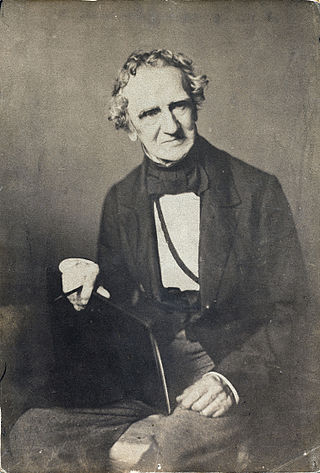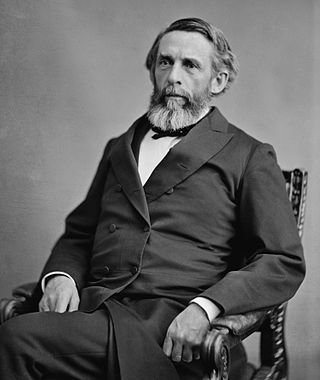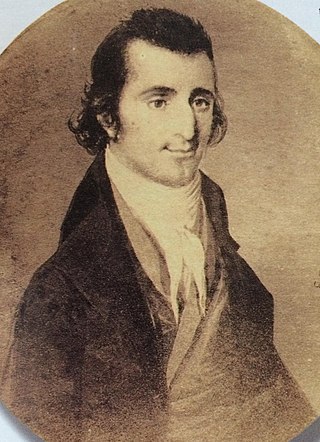
Suffolk County is located in the Commonwealth of Massachusetts, in the United States. As of the 2020 census, the population was 797,936, making it the fourth-most populous county in Massachusetts. The county comprises the cities of Boston, Chelsea, Revere, and Winthrop. The traditional county seat is Boston, the state capital and the largest city in Massachusetts. The county government was abolished in 1999, and so Suffolk County today functions only as an administrative subdivision of state government and a set of communities grouped together for some statistical purposes. Suffolk County is located at the core of the Boston-Cambridge-Newton, MA-NH Metropolitan Statistical Area as well as the greater Boston-Worcester-Providence, MA-RI-NH-CT Combined Statistical Area.

McKean County is a rural county in the Commonwealth of Pennsylvania. As of the 2020 census, the population was 40,432. Its county seat is Smethport. The county was created in 1804 and organized in 1826. It was named in honor of former Pennsylvania Governor and Declaration of Independence signer Thomas McKean.

Haverhill is a city in Essex County, Massachusetts, United States. Haverhill is located 35 miles north of Boston on the New Hampshire border and about 17 miles from the Atlantic Ocean. The population was 67,787 at the 2020 United States census.

William Barton Rogers was an American geologist, physicist, and educator at the College of William & Mary from 1828 to 1835 and at the University of Virginia from 1835 to 1853. In 1861, Rogers founded the Massachusetts Institute of Technology. The university opened in 1865 after the American Civil War. Because of his affiliation with Virginia, Mount Rogers, the highest peak in the state, is named after him.

Thomas Sully was an American portrait painter in the United States. Born in Great Britain, he lived most of his life in Philadelphia, Pennsylvania. He painted in the style of Thomas Lawrence. His subjects included national political leaders such as United States presidents: Thomas Jefferson, John Quincy Adams, and Andrew Jackson, Revolutionary War hero General Marquis de Lafayette, and many leading musicians and composers. In addition to portraits of wealthy patrons, he painted landscapes and historical pieces such as the 1819 The Passage of the Delaware. His work was adapted for use on United States coinage.

The American Anti-Imperialist League was an organization established on June 15, 1898, to battle the American annexation of the Philippines as an insular area. The anti-imperialists opposed forced expansion, believing that imperialism violated the fundamental principle that just republican government must derive from "consent of the governed." The League argued that such activity would necessitate the abandonment of American ideals of self-government and non-intervention—ideals expressed in the United States Declaration of Independence, George Washington's Farewell Address and Abraham Lincoln's Gettysburg Address. The Anti-Imperialist League was ultimately defeated in the battle of public opinion by a new wave of politicians who successfully advocated the virtues of American territorial expansion in the aftermath of the Spanish–American War and in the first years of the 20th century, although the organization lasted until 1920.

The Old South Meeting House is a historic Congregational church building located at the corner of Milk and Washington Streets in the Downtown Crossing area of Boston, Massachusetts, built in 1729. It gained fame as the organizing point for the Boston Tea Party on December 16, 1773. Five thousand or more colonists gathered at the Meeting House, the largest building in Boston at the time.

Captain Gamaliel Bradford, was a sea captain, privateersman, and later a prison warden who earned notoriety during the Quasi-War with France commanding two privately owned and armed merchant vessels known as letters of marque. Born November 4, 1763, in Duxbury, Massachusetts, he served in the 14th Massachusetts Regiment at a young age during the American Revolution, initially as a private and eventually was commissioned a lieutenant in the Continental Army. At the end of the war he went to sea as a mariner and by the 1790s commanded merchant vessels as a master mariner.
Edward (Charles) Wagenknecht was an American literary critic and teacher who specialized in 19th century American literature. He wrote and edited many books on literature and movies, and taught for many years at various universities, including the University of Chicago and Boston University. He also contributed many book reviews and other writings to such newspapers as the Boston Herald, The New York Times, and the Chicago Tribune and to such magazines as The Yale Review and The Atlantic Monthly.
Leonard Black was born a slave in Anne Arundel County, Maryland, and was separated from his family by the age of six. He escaped after 20 years of slavery. In 1847 he wrote The Life and Sufferings of Leonard Black: A Fugitive from Slavery. With encouragement and support, he became a Baptist minister, preaching in Boston, Providence, and Nantucket before becoming minister of First Baptist Church in Petersburg, Virginia.

Gamaliel Bradford VI was an American biographer, critic, poet, and dramatist. Born in Boston, Massachusetts, the sixth of seven men called Gamaliel Bradford in unbroken succession, of whom the first, Gamaliel Bradford, was a great-grandson of Governor William Bradford of the Plymouth Colony. His grandfather, Dr. Gamaliel Bradford of Boston, was a noted abolitionist.

Jerome Bonaparte Holgate (1812–1893) is the name of the American author who wrote the dystopian novel A Sojourn in the City of Amalgamation, in the Year of Our Lord, 19-- (1835). He wrote this work under the pseudonym of Oliver Bolokitten. After his death in 1893, he was laid to rest in Riverside Cemetery in Defiance, Ohio.

Christopher G. Ripley was an American lawyer and judge of Minnesota. He served as Chief Justice of the Minnesota Supreme Court from January 7, 1870 to April 7, 1874.
The Boston Society for the Diffusion of Useful Knowledge in Boston, Massachusetts, was founded "to promote and direct popular education by lectures and other means." Modelled after the recently formed Society for the Diffusion of Useful Knowledge in London, the Boston group's officers included Daniel Webster, Nathan Hale, Jacob Bigelow, William Ellery Channing, Edward Everett, Nathaniel L. Frothingham, and Abbott Lawrence. The society published the American Library of Useful Knowledge, a series of scholarly works by British and American authors. Public lectures on a variety of topics were held at Boston's Masonic Temple, and other venues.
Nathaniel Stone Simpkins was a bookseller, publisher, and legislator in Massachusetts in the 19th century. He ran a bookshop and circulating library in Boston ca.1820-1830. "In 1835 he established the Barnstable Journal [of Barnstable, Massachusetts], and in 1856 he established the Yarmouth Register" of Yarmouth, Massachusetts. Simpkins served as a "Representative to the General Court of Mass. in 1836, 1850 and 1851."

Hugh Murray FRSE FRGS (1779–1846) was a Scottish geographer and author. He is often referred to as Hew Murray.

Comparison diagram or comparative diagram is a general type of diagram, in which a comparison is made between two or more objects, phenomena or groups of data. A comparison diagram or can offer qualitative and/or quantitative information. This type of diagram can also be called comparison chart or comparison chart. The diagram itself is sometimes referred to as a cluster diagram.

Ezra Weston II, also known as King Caesar, was a prominent shipbuilder and merchant who operated a large maritime industry based in Duxbury and Boston, Massachusetts. His father, Ezra Weston I, began small scale shipbuilding operations in Duxbury in 1763 and eventually came to be known as "King Caesar" for his success in business. Ezra Weston II, his only son, inherited the nickname when Ezra I died in 1822.
Gamaliel Bradford (1795–1839) was an American physician, the superintendent of Massachusetts General Hospital, and an abolitionist.
The Ohio Anti-Slavery Society (1835–1845) was an abolitionist Anti-Slavery Society established in Zanesville, Ohio, by American activists such as Gamaliel Bailey, Asa Mahan, John Rankin, Charles Finney and Theordore Dwight Weld.















